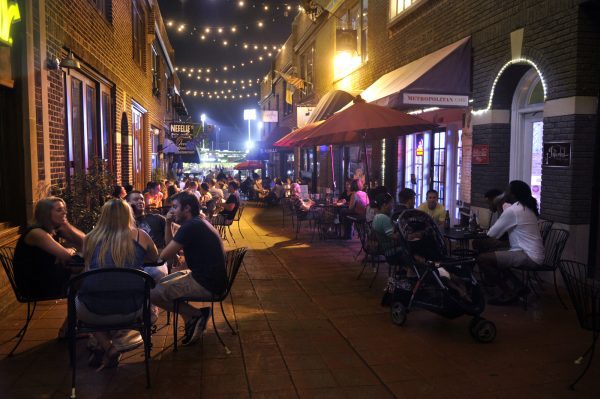Charting Mecklenburg’s path toward a livable future

The 115 ideas for creating a more livable Mecklenburg range from protecting more historic buildings to better training the local workforce to rethinking local residents’ reliance on fescue lawns.
They’re all part of the latest draft of the Mecklenburg Livable Communities Plan, unveiled to the public last week. The plan, which is being shown to city, county and towns’ elected officials this week, is the not-yet-final result of a process begun in spring 2013, a partnership among Mecklenburg County, the City of Charlotte, the six smaller municipalities in the county, and Foundation For The Carolinas.
The idea is to create a unified vision for the future, based on community wishes and existing plans, and to offer suggested goals and initiatives to make the vision into reality. (Click here to read the draft plan.)
Heidi Pruess, Mecklenburg County community plan and sustainability officer, has been shepherding the plan. In an interview last week, she described the process that created the plan, which involved 250 members of various work groups. After a series of listening sessions, more than 2,000 people weighed in with feedback. More than 60 experts or other various stakeholder groups – examples: the Charlotte Chamber, the Latin American Coalition, Duke Energy, Mecklenburg Ministries – helped inform their members, Pruess said.
More information |
The draft plan, she said, marries the community’s wishes for the future with the implementation ability of the experts’ knowledge.
The result? Seven guiding principles, with a series of 21 strategies, each with four to nine specific actions recommended.
The guiding principles are for the county to be: welcoming, innovative, connected, inclusive, prepared, healthy and resilient. The 21 strategies are clustered under those guiding principles.
For example, to help make Mecklenburg welcoming, two strategies are to “Celebrate and integrate history, culture and diversity,” and to “Increase access to community-based arts, science and history education.”
Under the principle of inclusivity, one strategy is to “Balance housing options available in neighborhoods.” One proposed action: “Enhance mixed-income and mixed-use housing opportunities, including the identification of special housing districts to encourage live-work-shop-create environments.”
Next up, Pruess said, is for elected officials from Charlotte, the county, and the six other Mecklenburg municipalities to study the draft plan. She will compile more comments from them as well as from the community and is hopeful about getting elected officials’ endorsement early in 2015. Meanwhile, as many as 200 community partner groups are being asked to join and help work on the next phase: devising suggested ways to put the plan into action, and ways to measure, yearly, whether it’s working.
Pruess, asked if anything in the process so far had surprised her, said, “We have all these great initiatives and all these experts, and they aren’t connecting with each other.”
Also, she said, she was struck by the theme, from a number of local comments, that this city and region should remain a welcoming and inclusive place. “It was an equal priority with economy and jobs,” she said, “and with being healthy and resilient.” Part of it, she speculated, arises from the custom of Southern hospitality – but with a twist. Newcomers, she said, seemed not to want to replicate outdated stereotypes of Southern ways, yet were attracted here because of that sense of being welcomed. As Pruess put it, “Folks in this community want to be welcoming, but this is not the Charleston-South Carolina-South.”